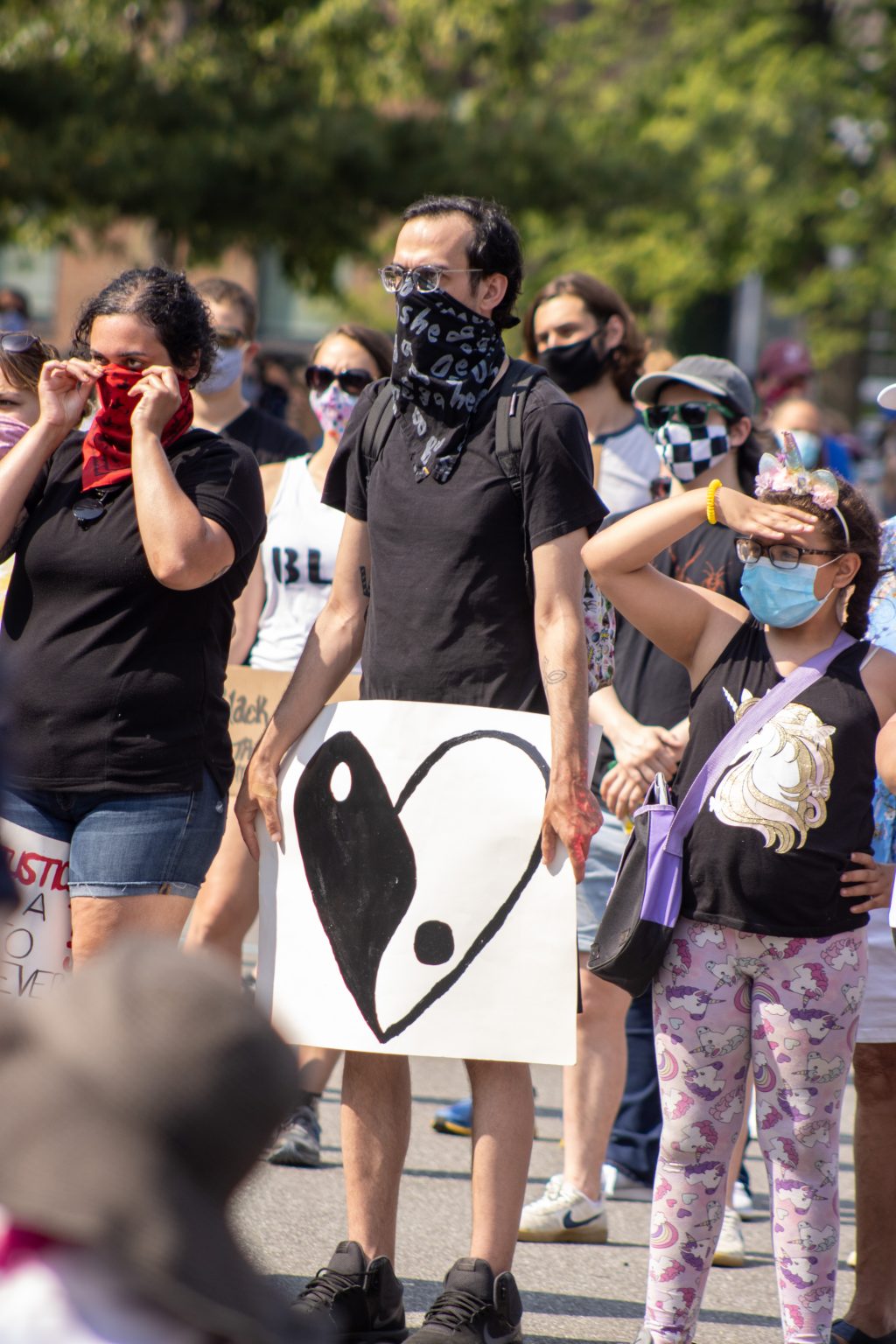In the coming months of the election, several current events are the main topics of conversation; for example, the ongoing pandemic stands as the elephant in the room. Along with it are the BLM movement, wildfires, hurricanes, and the presidential election. We are experiencing a time of immense change, and many are taking the opportunity to make their statements through art. By incorporating our current politics into art, the saying “A picture is worth a 1000 words” comes to life and leaves a prominent impression on those who view it.
Among the top of the list is the American painter Titus Kaphar, notable for his paintings that convey the perspectives and experiences of marginalized communities. Kaphar often leaves a hidden message within the strokes of the painting. His most recent painting is Tropical Space, a piece that shows the fear of African American communities over the disappearance of their children. The collection contains a series of images with parents and children, but the children are cut out of the picture, showing only the blank wall behind.
Kaphar has made many other works as well, such as his Seeing Through Time series, which explores the past history of America and the lives of black people at that time; by exposing America’s mistakes in the past, we Americans can learn from these mistakes in order to create a brighter future for everyone. Right now more than ever, Kaphar’s images raise awareness of underrepresented communities, especially African Americans, tying in with the BLM movement.
As the election is so prominent this year and voting is arguably more crucial than ever, many have used art as an incentive for social change. Groups of artists are joining together to form Enough of Trump, an art campaign that hopes to encourage voters to vote in the upcoming election; their goal is to remove Trump from office and target states like Ohio and Minnesota to vote. These posters will be shown at protests and on billboards for all to see, displaying phrases such as “Enough Monarchy, We Need Democracy!”, “Enough Noise and Lies, Give Me Some Truth”, and “Basta!”, translating to “that’s enough!” in Spanish. The idea was created out of anger against Trump for fueling racial tensions, and there is still much work to be done to accomplish their goal.
Sculptures are also joining the parade of political art- Luciano Garbati’s sculpture “Medusa With the Head of Perseus” was installed across from the Manhattan Court, where Harvey Weinstein was tried. The statue had achieved fame following exposure of Weinstein’s crimes and the dawn of the “#MeToo” movement. Inspired by the story of Medusa told by Ovid, Garbati thought of depicting a scene in which Medusa won the battle and questioned her identity as a monster. It was adopted as a feminist symbol of justice and equality, and still is today.
Seeing is believing. Hearing something does not have as much impact as experiencing it, which is exactly the goal of visual art. As artists keep incorporating political messages into their art, more voices can be heard in rather unconventional ways.
Taryn Kalyanaraman
Staff Writer
Graphic: Sam Cohen

